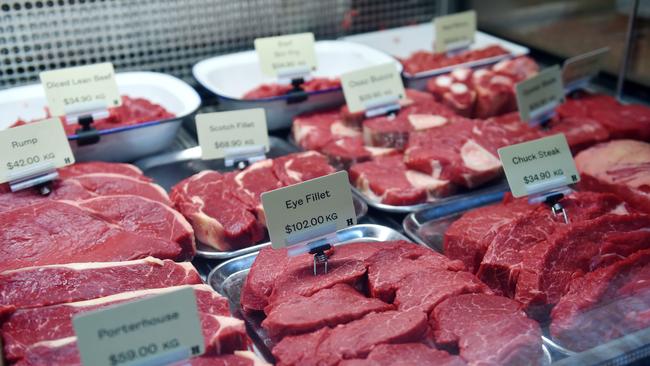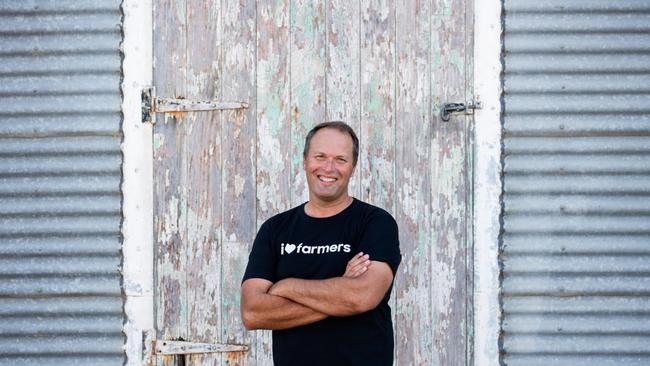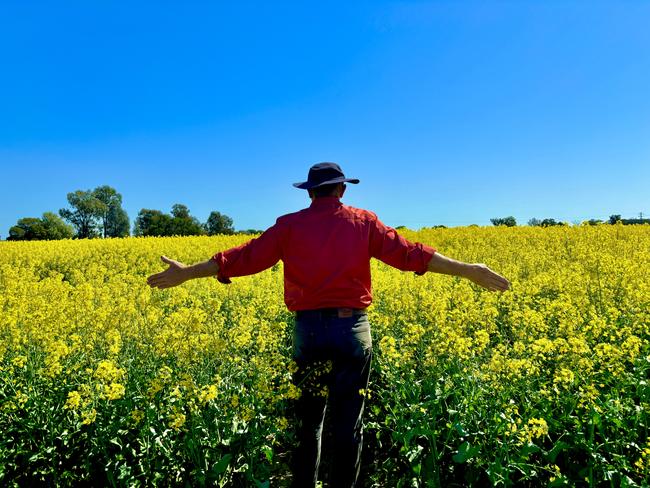Farmers warn lower quality meat cuts could hit one state after a dry, cold winter has affected crop growth
Australians could be in for a spate of lower quality meat cuts on supermarket shelves after one state was hit with a dry, cold winter, with crops suffering as a result.

Business
Don't miss out on the headlines from Business. Followed categories will be added to My News.
Desperate farmers are being forced to feed their livestock hay and straw with consumers warned to brace for lower quality cuts of meat as a result.
Dry, cold conditions in some parts of country have impacted grass and pasture levels which in turn have pushed up the demand and price for hay, straw and feed grains.
National Farmers Federation President David Jochinke warned this could force some farmers into selling their sheep and cattle “before they’ve reached their full production”.
“So we’ll see lower quality cuts come onto the market more,” Mr Jochinke said.
“You might see an uplift in the premium cuts domestically purely because those animals won’t be reaching their higher level … but the lower quality cuts, may see more of them because those animals aren’t grown out to that higher quality.
“So you’re not going to get your big juicy steaks, you’re going to get more of your trims and more of your lower grade cuts,” Mr Jochinke said.


He highlighted the stark cost increases, revealing he’d sold barley for $229 per tonne back in March. However, the price has since shot up to $340 per tonne as of the beginning of August.
The price of hay has also soared, with Mr Jochinke pricing it at $220 per tonne at the beginning of the year, compared to $300 per tonne by June.
He’s also heard of other farmers selling the crops for at even steeper prices.
While Mr Jochinke usually buys sheep and feeds them over summer, the lack of pasture growth and increase in price for feed grains has led him to hold off.
“I haven’t bought any yet purely because I don’t have any pasture at home to feed them on,” he said.
Despite the cold conditions in Victoria and South Australia, unseasonably high temperatures have soared across other parts of the country throughout August, with a Bureau of Meteorology spokesperson confirming many winter temperature records have been smashed.
This includes Yampi Sound in WA’s Pilbara region, which experienced the hottest winter day on record for anywhere in the country at 41.6C on Monday August 26.
“Maximum temperatures of 5-16C above the August average have been observed across the continent, with the highest temperature anomalies seen through Western Australia, South Australia, the Northern Territory, Queensland and northern New South Wales,” the spokesperson said.
University of Sydney Northern Agriculture and Plant Breeding Institute director Professor Guy Roth said crops could be affected if the current hot spell continues for an extended period.
“Higher than average temperatures, even one or two degrees, will affect pollen fertility, and that plays out in terms of less grain which means less yields,” Professor Roth said.
“So even a one degree rise above the ideal temperature could result in a five per cent yield loss. We’re hoping that doesn’t happen, but let’s see.”
Professor Roth said it “could be a different story” if it gets unseasonably hot again at the end of September “but that’s too far out to predict”.
He said crop growers in other parts of the country including Northern NSW are enjoying better growing conditions thanks to “a really good season in terms of rainfall”.


Professor Roth said wheat crops could pull between five and six tonnes of a hectare in Northern NSW this year, compared to average yields of three and a half tonnes of a hectare.
“For grain, the temperatures are well above average. We are very fortunate that we have had a wet winter so our crops are looking good - they’re probably about two weeks earlier than they’d normally be due to the warmer temperature,” he said.
Professor Roth also noted that NSW is a “big state”, so not every farm will have the same results.
The only certainty in agriculture seems to be that nothing is “straightforward or simple”, with Mr Jochinke calling it a “balancing act”.
However Mr Jochinke said support from consumers can have a massive impact on farmers, and urged people to purchase Australian produce as much as possible.
“We generally have good choices and very safe, reliable food systems: that’s only because farmers are able to survive tough times, and this is just a bit of a reminder that if consumers can purchase Australian grown food, it does have a huge support to the farming base,” he said.
“So if you can and have the ability to, buy Australian.”
Originally published as Farmers warn lower quality meat cuts could hit one state after a dry, cold winter has affected crop growth




